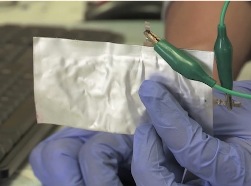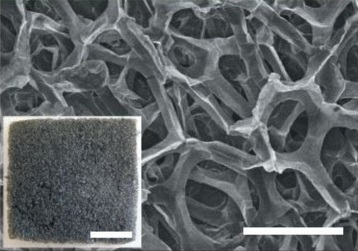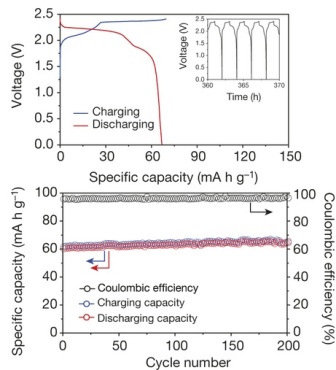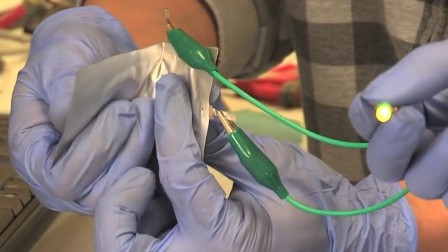Categories: Featured Articles » Interesting electrical news
Number of views: 29685
Comments on the article: 6
Aluminum batteries
 Nearly thirty years of searching for ways to improve the aluminum-ion battery is nearing its end. The first battery with an aluminum anode, capable of quickly charging, while being inexpensive and durable, was developed by scientists from Stanford University.
Nearly thirty years of searching for ways to improve the aluminum-ion battery is nearing its end. The first battery with an aluminum anode, capable of quickly charging, while being inexpensive and durable, was developed by scientists from Stanford University.
Researchers confidently state that their brainchild could well become a safe alternative to lithium-ion batteries, used everywhere today, as well as alkaline batteries, which are environmentally harmful.
It will not be superfluous to recall that lithium-ion batteries sometimes ignite. Chemistry professor Hongji Dai is confident that his new battery will not light up, even if it is drilled through. Professor Day's colleagues described the new batteries as “ultra-fast rechargeable aluminum-ion batteries”.
Due to its low cost, fire safety, and the ability to create significant electrical intensity, aluminum has long attracted the attention of researchers, however, many years have gone into creating a commercially viable aluminum-ion battery that could produce sufficient voltage even after many charge-discharge cycles.

Scientists had to overcome many obstacles, including: decay of the cathode material, low cell discharge voltage (about 0.55 volts), loss of capacity and insufficient life cycle (less than 100 cycles), fast power loss (from 26 to 85 percent after 100 cycles).

Now, scientists have introduced an aluminum battery with high stability, in which they used a metal anode of aluminum paired with a cathode of three-dimensional graphite foam. Prior to this, many different materials for the cathode were tried, and the decision in favor of graphite was found by accident. Scientists from the Hongji Daya group have identified several types of graphite material that show very high productivity.
In their experimental samples, the Stanford University team placed an aluminum anode, a graphite cathode, and a safe liquid ionic electrolyte, consisting mainly of salt solutions, in a flexible polymer bag.

Professor Dai and his group recorded a video where they showed that even if they drill a shell, their batteries will still continue to work for a while and will not light up.
An important advantage of the new batteries is their ultra-fast charge. Typically, lithium-ion smartphones recharge within a few hours, while the prototype of the new technology demonstrates an unprecedented charge speed of up to one minute.

The durability of the new batteries is particularly striking. Battery life is more than 7500 charge-discharge cycles, and without loss of power. The authors report that this is the first model of aluminum-ion batteries, with ultra-fast charging, and stability in thousands of cycles. A typical lithium-ion battery can withstand only 1000 cycles.

A notable feature of the aluminum battery is its flexibility. The battery can be bent, which indicates the potential for its use in flexible gadgets. In addition, aluminum is much cheaper than lithium.
It seems promising to use such batteries for storing renewable energy with a view to backing it up for the subsequent provision of electric networks, since according to the latest scientists, an aluminum battery can be charged tens of thousands of times.
Contrary to the mass-used elements AA and AAA with a voltage of 1.5 volts, an aluminum-ion battery generates a voltage of about 2 volts. This is the highest indicator anyone has achieved with aluminum, and in the future this indicator will be improved, the developers of new batteries say.
An energy storage density of 40 W-hour per kilogram was reached, while lithium ion batteries this figure reaches 206 watts per kilogram. However, the improvement of the cathode material, Professor Hongji Dai is sure, will ultimately lead to both an increase in voltage and an increase in the energy storage density in aluminum-ion technology batteries. In any case, a number of advantages over lithium-ion technology have already been achieved. Here, low cost, combined with safety, and high-speed charging, and flexibility, and a long service life.
See also at bgv.electricianexp.com
:
